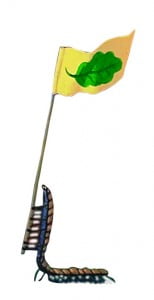General Competition Rules
1. All photographs must be taken during the month of May 2023 on the island of Ireland (including Ireland’s islands and marine territory) and submitted before 31st May at midnight. Please ensure the correct date is set in your camera settings, as we will be checking metadata to confirm the capture date.
2. The competition is open to amateur photographers worldwide. An amateur is a photographer who makes less than 15% of their annual income, or less than €5,000 p.a. from the practice of photography.
3. The photograph(s) must be consistent with the theme of ‘Biodiversity’.
We interpret this as relating to:
a. Celebrating Biodiversity in all its forms
6. Employees of the IEN are not eligible to enter.
7. The Judges’ decision is final and binding in all matters and no correspondence will be entered into.
8. By entering the promotion and submitting your photograph, you hereby grant the Irish Environmental Network (IEN) a license to use your photograph. The IEN will never use your photograph for profit, and will always credit the original photographer where possible. Image copyright remains with the original photographer.
The Ocean Category is sponsored by Fair Seas. By entering the promotion and submitting your photograph for the Ocean Category, you hereby grant Fair Seas a license to use your photograph. Images eligible for the Ocean Category may be used by Fair Seas to promote their work. Fair Seas will never use your photograph for profit, and will always credit the original photographer where possible. Image copyright remains with the original photographer.
The shortlisted photographs will be announced in June 2024. The winners of both categories will be announced at a the Biodiversity Photographer of the Year 2024 Exhibition and Prize Giving event. (Date and venue TBA.)
9. All imagery MUST be the total and exclusive work of the submitting photographer and may not include any element that is the copyright of another.
10. When a photograph is submitted and entry
11. The IEN is excluded from liability for any loss, damage or injury which might occur to the winner arising from his or her acceptance of the prize. The prizes are: First place receives €500, second receives €300, third receives €200. The prize for the Ocean Category shall be €400. Receiving a prize for first, second or third place does not exclude an entry from also receiving a prize for the Marine Category. Prizes are non-transferable. Any prizes not claimed within three months of the prize-giving are considered forfeit.
12. Entry to the Competition shall be deemed full acceptance of the terms & conditions.
Rules regarding Animal Welfare and Wildlife Photography Ethics
1. Images of nesting birds will not be accepted. Be aware that under Section 23 (6)(b) of the Wildlife Act, 1976 (as amended) a license is required for a person to take or make photographic, video or other pictures of a protected wild animal of a species specified in the license, on or near the breeding place of such an animal. You can read more about this here.
2. Photographs taken from commercial hides will not be accepted.
3. Entrants are not permitted to submit images that portray captive or restrained animals, animal models, and/or any other animal being exploited for profit unless for the purposes of reporting on a specific issue regarding the treatment of animals by a third party.
3. Images must not be staged*.
(*Staging an image means manipulating the animal and possibly its surrounds. The dangers of staging wildlife in photography for no greater purpose than to achieve an eye-catching image are three-fold: direct negative animal welfare impacts, normalizing the view that manipulation is generally acceptable, and potentially misrepresenting reality.)
4. Entries must not deceive the viewer or attempt to disguise and/or misrepresent the reality of nature.
5. Caption information supplied must be complete, true and accurate.
6. Entrants must not do anything to injure or distress an animal or damage its habitat in an attempt to secure an image; an animals welfare must come first.
7. The IEN reserves the right to disqualify any entry that stage wildlife or any behavior that has the potential to injure or distress an animal or its habitat. The IEN reserves the right to disqualify images that use baiting (especially live baiting).
Submission Rules
1. All entries must include a valid email address.
2. File names should include the name of the photographer and the title of the image. Eg. john_smith-butterfly-in-flight.jpeg.
2. The maximum number of submissions per participant is 5 images.
3. All images for entry in the ‘Biodiversity Photographer of the Year 2023’ must be sent in via the online application form. Details will be provided on the website ‘www.biodiversityweek.ie’ on 1st May 2023.
4. Photographs to be entered into the ‘Biodiversity Photographer of the Year’ should be no smaller than 3,500 pixels on the shortest side, where possible, and the overall size has no upper limit.
5. Images must be in JPEG format
6. Images should be 100% quality (JPEG)
7. Photographers may make reasonable use of digital darkroom type techniques which enhance quality but do not distort the photograph. Only minor burning, dodging, sharpening, and/or
Featured image credit: Ladybird – by Michael Keating

